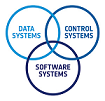Speaker
Description
CloudScout is a project financed by the European Space Agency and run by a European consortium led by cosine Remote Sensing, participated by University of Pisa, Sinergise and Ubotica technologies. The project targets the development, and for the first time ever the in-orbit demonstration, of an Artificial Intelligence based algorithm for cloud detection.
The inference is applied on images acquired by HyperScout-2, a very compact and powerful hyperspectral/thermal imager which embarks an unprecedented processing capabilities.
The specification of HyperScout-2, with its very wide FOV (31deg) and small GSD (75 m in the VNIR and 390 m in TIR), as well as the large number of spectral bands (45 in VNIR and 4 in TIR), provides very powerful capabilities for a large number of applications. However, its management at system/mission level turns to be a challenging task, especially for what concerns the data management and download. For an effective use of the instrument potentiality the information processed from the Tera Bytes of data generated needs to reach the final user in a reasonable time. This pushes the mission to the edge of feasibility, being a very challenging task even for bigger classes of satellites.
In order to maximize the quality of the information included in the downloaded data, HyperScout-2 uses its on board processing capability without relying on platform subsystems. HyperScout-2 is in fact equipped with an hybrid processing platform composed of FPGA, CPU, GPU and VPU. The VPU is a state of art Vision Processing Unit developed by Intel and will be flown in space for the first time as part of HyperScout-2. Thus, HyperScout-2 will enable experimental programs to investigate the use of Artificial Intelligence (AI) for a variety of applications in the field of object detection and data inference.
This paper presents the first application that will fly on the ESA mission PhiSat-1 / FSSCAT, part of the ESA EOP initiative to leverage small satellites to foster technology breakthrough developments.

